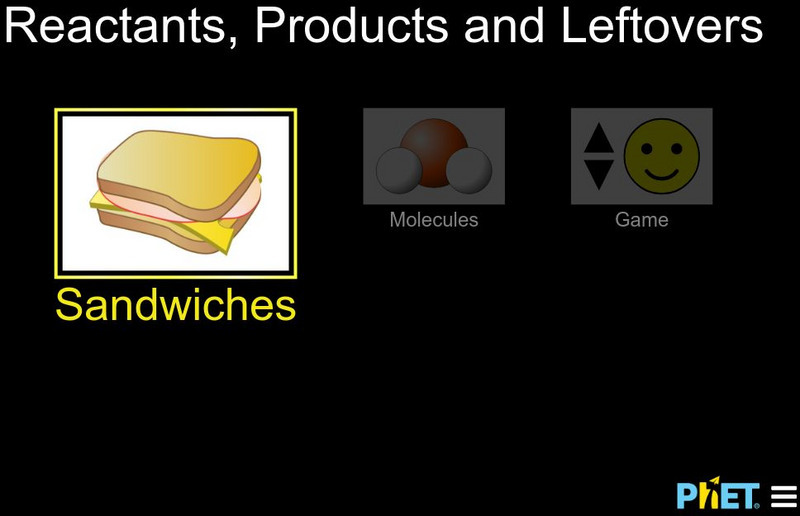Virginia Department of Education
Electricity and Magnetism
Take charge of your class and provide them with an electrical experience! Individuals investigate the basic principles of electricity and magnetism by creating a model to test electric current and the amount of electricity generated....
Curated OER
What's Cooking
Students complete a solar radiation activity. In this solar radiation lesson plan, students complete an experiment to learn about solar radiation. Students make solar tea by using the energy of the Sun to brew tea.
Curated OER
Chapter Review Topics for Exam 2
In this chemistry chapter review worksheet, students examine their knowledge of equilibrium, Brønsted acid, and pH value as they respond to 25 short answer questions.
Curated OER
Using VNTR Analysis to Identify Guilt at a Crime Scene
Students collect DNA from cheek cells. They compare and contrast the processes of DNA replication and PCR. They discuss how this information can be used to determine guilt at crime scenes.
Curated OER
Carbon Cycle
Students study the carbon cycle and how it cycles through our environment. In this carbon cycle lesson students play a game that allows them to discover that carbon can take many forms and that there is not a set path.
Curated OER
English Vocabulary Skills: AWL Sublist 7 - Exercise 6a
In this online interactive English vocabulary skills worksheet, students answer 10 matching questions which require them to fill in the blanks in 10 sentences. Students may submit their answers to be scored.
Curated OER
Martian Mummies
Learners participate in "Raiders of the Future", a role play about futuristic scientists sending a spaceship to Mars for research and exploration. They collect geological samples for analysis, discover the ruins of an ancient...
Curated OER
Effects of Lung Disease
Students illustrate the chronic lung conditions associated with smoking and write a persuasive argument against smoking. In this lung disease lesson, students use straws and balloons to illustrate the problems created by smoking. They...
Concord Consortium
Concord Consortium: Stem Resources: Chemical Reactions
This web-based activity gives students an opportunity to write chemical reactions, balance chemical equations, and explain what is happening during a given chemical reaction. Also addressed is the effects of concentration and temperature...
Concord Consortium
The Molecular Workbench Database: Chemical Reactions
Observe that chemical reactions follow the pathway the uses the least amount of energy in this simulation.
Concord Consortium
The Molecular Workbench Database: Chemical Reactions and Stoichiometry
This simulation helps students investigate the basics of chemical equations. Students will review stoichiometry and what effects their reaction rates.
Concord Consortium
Concord Consortium: Molecular Workbench: How Chemical Reactions Happen
View this collection of simulations to gain a better understanding of how chemical reactions happen.
Concord Consortium
Concord Consortium: Molecular Workbench: Collision Theory of Chemical Reactions
Watch an animation of atoms and molecules colliding that shows how these particles combine during chemical reactions. Change levels of energy to see how reactions are affected.
University of Colorado
University of Colorado: Ph Et Interactive Simulations: Reversible Reactions
Watch a reaction proceed over time. How does total energy affect a reaction rate? This model represents an analogy of chemical reactions.
Concord Consortium
Concord Consortium: Molecular Workbench Showcase: Chemistry, Reactions
Simulations that can help students visualize and understand concepts in chemistry like the collision theory, chemical reaction equilibrium, and polymerization.
University of Colorado
University of Colorado: Ph Et Interactive Simulations: Reactants, Products and Leftovers
An interactive simulation that teaches about chemical reactions and limiting reactants by creating sandwiches to represent chemical reactions. See how many can be made using different amounts of reactants. This simulation can either be...
University of Colorado
University of Colorado: Ph Et Interactive Simulations: Reactants, Products, Leftovers
Explore the analogy of sandwich making with several ingredients and see if anything is left over. Then do the same thing with reactants in a chemical reaction, to see how many different products can be made. Afterwards, play a game with...
University of Colorado
University of Colorado: Ph Et Interactive Simulations: Reactions & Rates
Explore what makes a reaction happen by colliding atoms and molecules. Design experiments with different reactions, concentrations, and temperatures. When are reactions reversible? What affects the rate of a reaction?
Iowa State University
Iowa State University: Metal/metal Ion Reactions: A Laboratory Simulation [Pdf]
Laboratory simulation tests how metals and metal ions react.
State University of New York
State University of New York: Acid Base Reactions
This simulation shows the exact 25 different acid-base pairs and examines how to the extent which they react relates to the strength of the acid and of the base.
Chemistry Collective
Chem Collective: Equilibrium Simulation
This applet is similar to the stoichiometry simulation but applies to chemical reactions that do not go to completion. The calculation of the equilibrium state of such reactions is typically covered months after students learn how to...
Concord Consortium
The Concord Consortium: Molecular Workbench: Seeing Chemical Equilibrium
Observe a visual representation of the equilibrium of products and reactants in chemical reactions. Record data while the reactions are taking place and print out a report afterwards.
Davidson College
Davidson College: Chemical Equilibria
Explains what chemical equilibrium is and the role of the Law of Mass Action. A Java simulation shows the concentration-time curves of a chemical reaction.
Concord Consortium
The Concord Consortium: Molecular Workbench: Catalyzed Reactions
Explore the purpose of catalysts in chemical reactions and how they affect the reaction pathways.





















